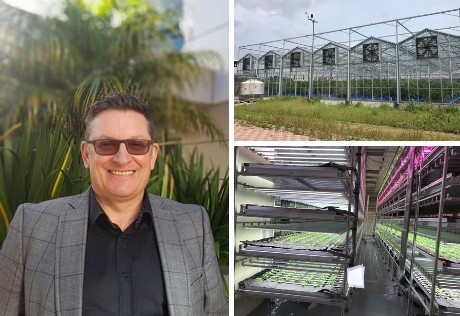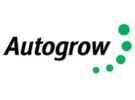Machine vision and robotic controls might sound like far-away and expensive innovations to many growers. If it was up to Darryn Keiller of Autogrow, every grower, both large and small, would have the opportunity to integrate these and other new technological developments into their grow operation.
When Keiller joined New Zealand-based Autogrow in 2014, he kick-started the mission to transform the business from a traditional automation and control company towards a high-tech solutions provider. The company soon became known for their advanced software that knows how to use data to solve problems in protected cropping. From optimization of irrigation and fertigation systems in greenhouses and nurseries, to control of complete indoor vertical farm systems.
Tech centric
"In the last three years our global presence has grown from 15 to 37 countries worldwide", says Keiller, when asked about their current growth markets. With an active presence at high-tech centric events like Indoor Ag-Con and other indoor farming summits, Autogrow has become an important player in the vertical and urban farming space. Companies like Plenty, Modular Farms, VydroFarm, and Gotham Greens all rely on their smart control systems. Nonetheless, Autogrow is increasingly active in the traditional greenhouse market too.
"Our main focus in any market is where growers are trying to mitigate food imports, or deal with the brutal assault of climate change with the help of controlled environment agriculture. For us that means supporting them with smart hardware, software and data services. The Americans are leaders in this field when it comes to vertical and urban farming. These trends have then emerged in cities like Singapore, Shanghai and Stockholm. But in Asia we see a lot of investments in greenhouse-based growing."
Modular & multi-function
In that emerging greenhouse industry, Autogrow tries to distinguish itself with its flexibility and open source approach. According to Keiller, many of the current control technologies available are not designed for use in specific new markets. "We believe that growers should have affordable, accessible and easy-to-use innovation – 24/7, anywhere in the world. We focus on small to medium sized growers who are growing multiple crops and need an affordable high tech system that is flexible enough to work with their existing infrastructure, but also takes into account future innovations."
Darryn Keiller, Autogrow
As an example, Keiller spoke about a recent adaptive installation at a Taiwanese greenhouse grower. "This customer implemented our MultiGrow control system to utilise all aspects of control. He is growing in a challenging climate in which high night time temperatures especially humidity demand sophisticated climate controls like pad and fan and air conditioning, on top of his traditional controls. Our MultiGrow system allows this grower to achieve his goals thanks to the multi-function capability. The modular system can start off being used as a relatively small-scale situation and can be easily expanded to control multiple greenhouse climate compartments with multiple technologies."
Adaptive
Autogrow has the vision to make the latest knowledge in regards to controls and automation available to a broader public. "We want to make new technologies as prolific and affordable as possible. A lot of the traditional control solution providers have a closed system in which it is not easy to adapt to new solutions and situations. We want to change this by making it easier to integrate new technologies that address things like machine vision , robotics and data."
Keiller explained that these topics will create a big shift in the market. "From Boston to Taiwan and New Zealand, every grower is talking about robotics, mechanization and better information (data) for insights. It is our goal to have a control solution available in which a lot of that sophisticated and emerging technology can be easily integrated." By developing smart APIs, connectors and cloud-based applications, the company can introduce new solutions at a rapid pace. Vision technology, machine learning, deep learning. "We want a standardized approach to the way that growers integrate new technology. From energy management software to programs that optimize climate or labour. It might not be always our own solution, but an open structure of a system enables easier integration to help growers optimize their processes and ultimately reliably produce more sustainable crops for consumers."

 For more information:
For more information:

 For more information:
For more information: